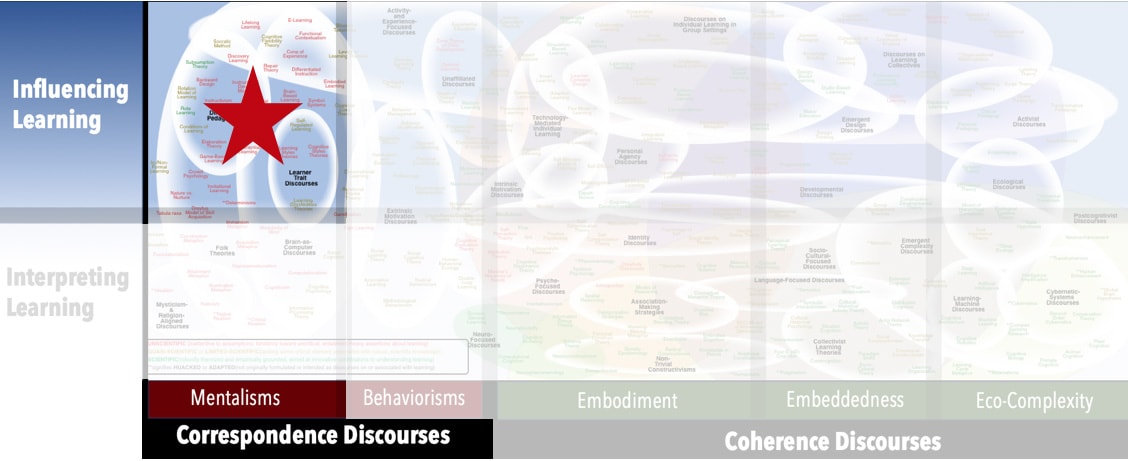AKA
Backward Mapping
Backward Planning
Tyler Rationale
Focus
Steps to follow for planning lessons and structuring curriculaPrincipal Metaphors
Backward Design is not explicit about the nature or dynamics of learning. Overwhelmingly, however, it invokes notions associated with the Attainment Metaphor:- Knowledge is … a territory/area/domain/field (typically involving)
- Knowing is … attaining a goal
- Learner is … a seeker
- Learning is … journeying (arriving at, reaching, progressing, accomplishing, achieving)
- Teaching is … leading, guiding, directing, facilitating
Originated
1940sSynopsis
Backward Design is a three-stage model of preparing to teach a topic. Step 1 (Goals) involves identifying the desired results, based on studies of employment requirements and information from subject matter specialists; Step 2 (Assessments) is about determining what sorts of results will constitute evidence the aims have been met; Step 3 (Planning) is about selecting, sequencing, and structuring activities to attain the desired goals.Commentary
Proponents of Backward Design assert that it is distinct from tradition curriculum planning, but it is in fact a fairly accurate reflection of what happens in most modern schooling systems. (The distinction perhaps applied in the 1940s, when the model was proposed.)Authors and/or Prominent Influences
Ralph Tyler; Jay Wiggins; Grant McTigheStatus as a Theory of Learning
Backward Design is not a theory of learning.Status as a Theory of Teaching
Backward Design is a theory of teaching.Status as a Scientific Theory
Backward Design is little more than a formalization of a processes used to plan curriculum and teaching. It is not a scientific theory.Map Location

Please cite this article as:
Davis, B., & Francis, K. (2021). “Backward Design” in Discourses on Learning in Education. https://learningdiscourses.com.
⇦ Back to Map
⇦ Back to List
